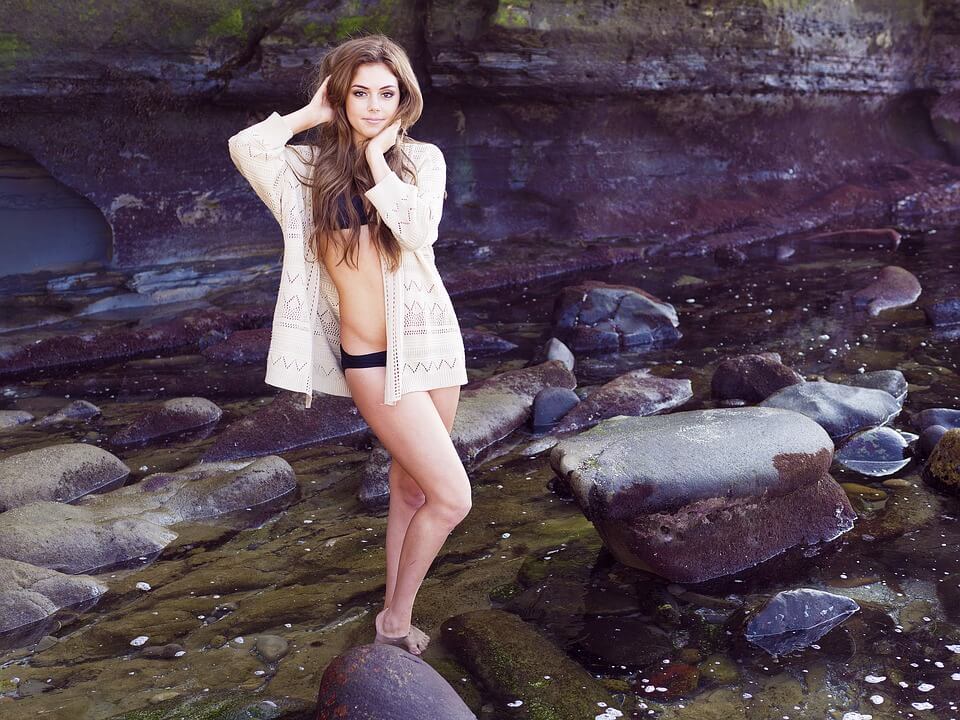Music
How to Photograph Rivers and Streams

There are many reasons for shooting rivers and streams in landscape photography and there’s a lot involved so here’s part one (probably).
Being in the landscape regularly will inevitably lead you along rivers or creeks. A lot of joy can be found being immersed in a shot from within a river. The bubbling rushing sounds, water drop splashes, glowing mossy rocks and birds whooshing along catching insects are some of the many highlights. You really do feel alive photographing from a stream and often the challenges it presents are well worth overcoming as the visual rewards can be fabulous.
Compositionally water presents excellent opportunities for a photograph such as making leading lines to another subject – like a mountain or waterfall. The patterns and shapes made by flowing water offer endless possibilities and can be the main subject in themselves. You will sometimes find S shapes and curves which are sought after compositional devices. Looking closely and exploring will reap visual rewards and you may see reflections plus reflected colors which help build a composition if the water isn’t too fast flowing. If you are lucky and the sun is shining at the right angle, water spray can form rainbow prisms which can make welcome color splashes too!
Quick Navigate
Don’t be a pussy, get in!
Eventually, you will want to get into the river or creek you are photographing, it happens to everyone. Unless you’re going to drown. Stay out if you intend to drown – yes it can be dangerous. Often the best compositional leading lines and action is from within the river, there’s no getting away from the fact you will want to get in at some point. When you do decide to take the plunge (waka waka), you’ll want to consider investing in appropriate footwear because if you wear your regular hiking shoes they will fall apart quickly. And they’ll get stinky quickly!
Use our very scientific and informative Arctic-ometer© infographic to pick the most appropriate footwear. Here’s a brief rundown:
- Flip flops
If you are somewhere warm enough good for you! Flip flops are great for hot places where there are no leeches or other waterborne critters. Shooting in warm places is a dream for landscape photographers and flip flops beat barefoot if there are scratchy rocks etc. - Water shoes
These specifically designed shoes let out the water and are apparently more grippy on slippery rocks. As above you’re probably somewhere pretty warm if you can get away with water shoes. Enjoy! - Wellington boots
Wellies are maybe the easiest all-rounder for beginners as you can hop into the creek as well as wear them on the hike, which saves some extra weight. Often they will do the job and you can find insulated boots for colder conditions. - Thigh waders
Longer and heavier than wellies, waders allow far deeper… wading. I carry these with me most of the time over wellies nowadays. The considerable extra weight is well worth it when you can happily reach most parts of a river or creek. - Chest waders or fishing waders
These are the Mecca of water footwear. In fact this is pretty much whole body wear.
If you are too embarrassed to get chest waders simply tell everyone you are taking up fishing and they will nod agreeably. You may get a look or two when you don chest height neoprene style-lead waders, however after a couple of hours in snow-melt rivers you’ll be grateful for the investment. (The ones I use were about $90 from Amazon). - There’s a six? Yes – a wetsuit.
If you’re wearing a wetsuit while shooting you’re doing something awesome and you don’t need our advice! Go play.
Versatile and essential, get your footwear sorted and you won’t look back! The good news is that any of these are applicable to photographing in oceans too.
Other essentials and tips for photographing rivers
- Generally avoid the sky
As a rule of thumb avoid the sky as it will probably be blown out. Of course, there are always exceptions and sometimes a little blowout isn’t too bad. Exceptions include having subject matter in the distance, such as a mountain or waterfall. Usually, these will be higher than the creek in the frame and have some sky around them. - Experiment with your shutter speed.
Use the right speed for the water you are shooting; if there is a fast flow it could be quicker or you may want a slow dreamy look. As with all landscape photography try and visualize the end result when making the photo. Here’s one example when shooting multiple frames in the landscape can be really useful. Find the shutter speed you like the best, whether it is 1/2 second or milky smooth at 5 seconds by taking enough pictures to see the difference. More on shutter speeds here. - Polarise
Invariably you’ll need a polarizer, but you don’t have to use it to the full effect. Sometimes the contrast will be too great when used at 100% so again use some experimentation in the field. See our related article about photography filters here. - Exposure is critical
If you are making an HDR blend this isn’t so critical, but for single frames, you will want to carefully consider your exposure. Generally, the brightest part of the image will be the fastest flowing water, using this will make for a solid exposure baseline. - Watch the weather
Shooting water can be done on any day, but partially cloudy are generally the best.
Having some light on any scene, rather than completely flat grey days will improve river and creek photos just as they do dry-landscapes. Some beams, patchy light through trees and golden hour color all make for creating depth, although beware of strong sunlight as the water will easily blow out. - Beware fast flowing rivers
Not only can these be dangerous, but your tripod can easily move when shooting. Put your leg in front of the tripod if it’s really fast flowing to disperse the water and try and position the other legs behind rocks to lessen the impact. - Regularly clean your lenses
Your lens will probably get misty/sprayed if you are in the water. Check the element to avoid disappointment later. If there is a lot of spray use a baggy or graduated filter to compose the shot first or consider taking your lens-hood. See our post here about keeping your lens clean in water.
Some extra things to consider are having a lot of pockets. You may be away from the river banks and will end up stuffing your pockets with bits and bobs. Similarly using a backpack is pretty essential rather than a slingback or other bag, which may flop into the water. One thing I will be getting one day soon is polarised sunglasses. It’s virtually impossible to gauge the slippery rocks with regular glasses and this has been on my list for ages!
















![Praise Anthem - Chavwuko [Album]](https://i0.wp.com/soullyrix.com/wp-content/uploads/2025/09/Praise-Anthem-Chavwuko.jpeg?resize=80%2C80&ssl=1)






